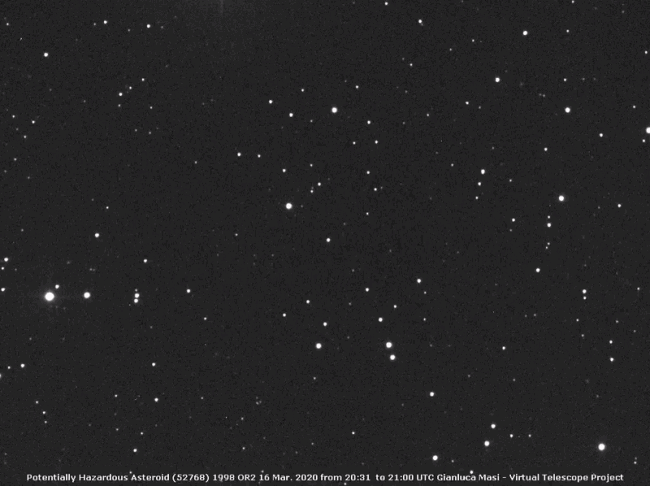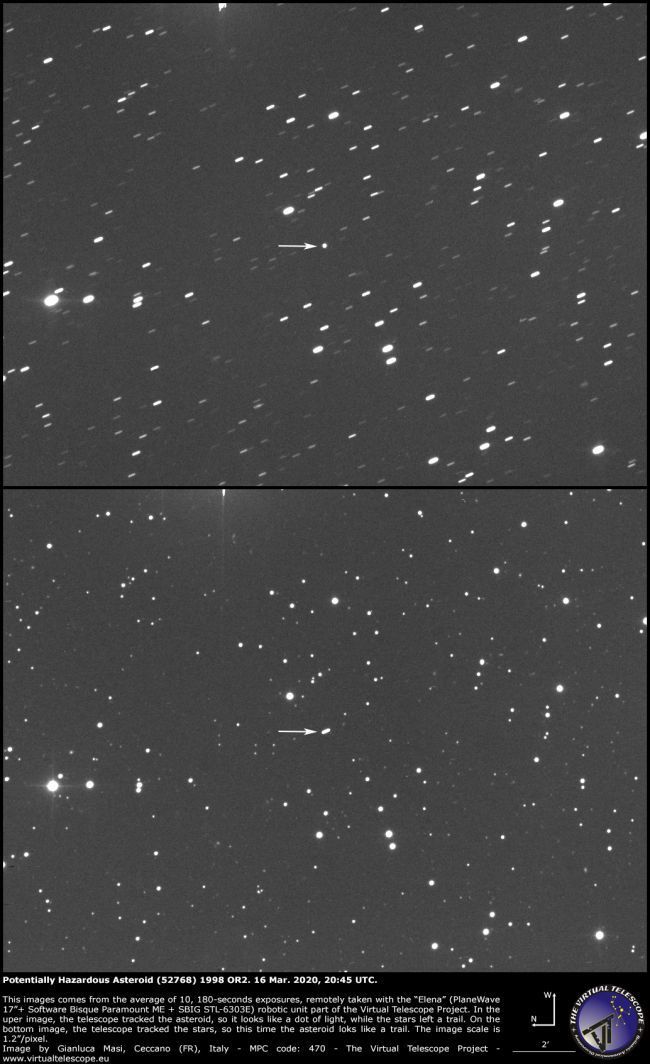21.03.2020
Don't worry. It won't even come close to hitting us.

This animation by Gianluca Masi at the Virtual Telescope Project shows the movement of the potentially hazardous asteroid 1998 OR2 in the night sky on March 16, 2020, between 4:31 p.m. EDT and 5 p.m. EDT (2031-2100 GMT). (Image credit: Gianluca Masi/
A large and "potentially hazardous" asteroid is poised to fly by Earth next month, but don't worry — it poses no threat to Earth.
Asteroid (52768) 1998 OR2 will make a close approach to Earth on April 29. The hefty space rock has an estimated diameter of 1.1 to 2.5 miles (1.8 to 4.1 kilometers), or about the width of the isle of Manhattan.
While an asteroid that size could wreak havoc if it crashed into Earth — prompting some alarmist and misinformed media reports — this asteroid poses no threat.
At its closest approach, which will happen at about 5:56 a.m. EDT (0956 GMT), asteroid 1998 OR2 will be 3.9 million miles (6.3 million km) from Earth. That's more than 16 times the average distance between Earth and the moon.
NASA has classified asteroid 1998 OR2 as "potentially hazardous" not because it puts Earth in danger, but because it fulfills certain criteria in the agency's classification scheme. According to NASA, an asteroid qualifies as "potentially hazardous" if its orbit ever intersects Earth's orbit at a distance less than 4.6 million miles (7.5 million km), or 0.05 astronomical units, the average distance between Earth and the sun.

Asteroid 1998 OR2, which orbits the sun in between the orbits of Earth and Mars, won't fly by Earth again until May 18, 2031, and it will be farther away, passing about 12 million miles (19 million km) from our planet, according to NASA.
Its next two flybys, in 2048 and 2062, will be even farther away. The closest flyby of asteroid 1998 OR2 for the foreseeable future will be on April 16, 2079, when it will be only 1.1 million miles (1.8 million km) away.
NASA and its international partners are actively scanning the skies for potentially hazardous asteroids and studying ways to deflect an Earth-bound asteroidbefore it strikes. So far, about one-third of the 25,000 large asteroids thought to be zooming around in Earth's cosmic neighborhood have been discovered.
Quelle: SC
